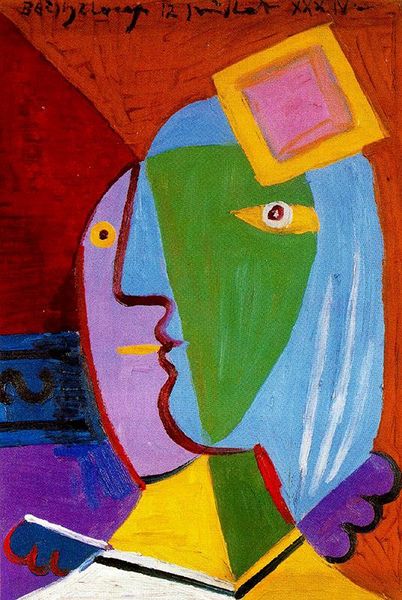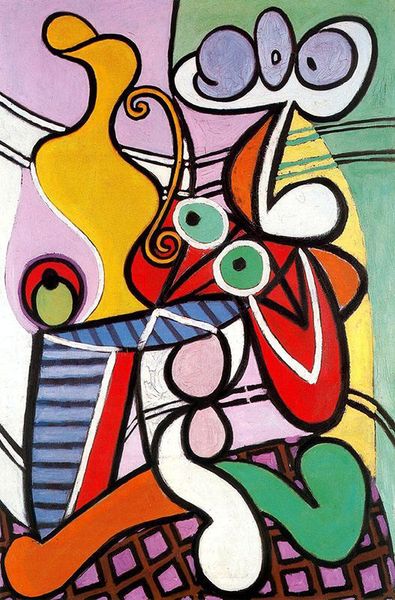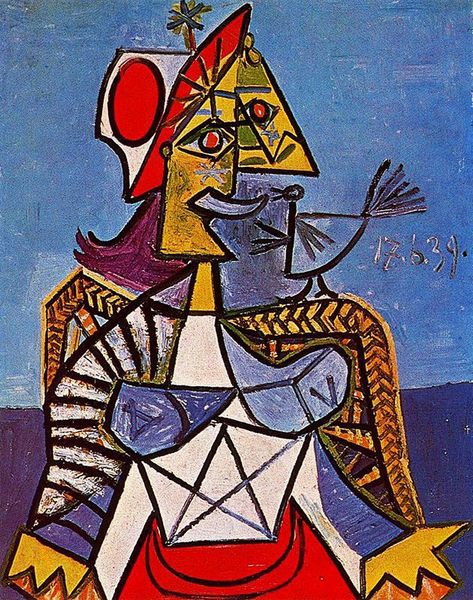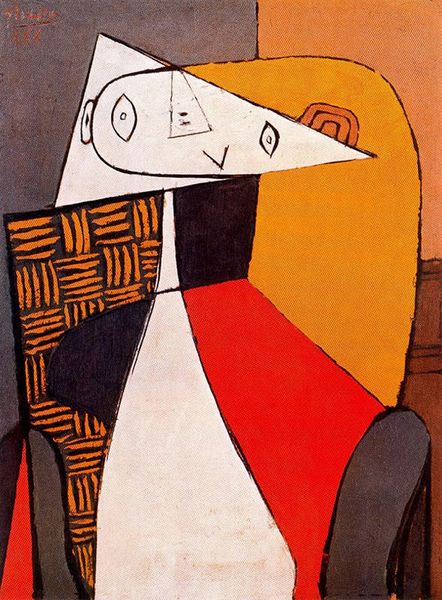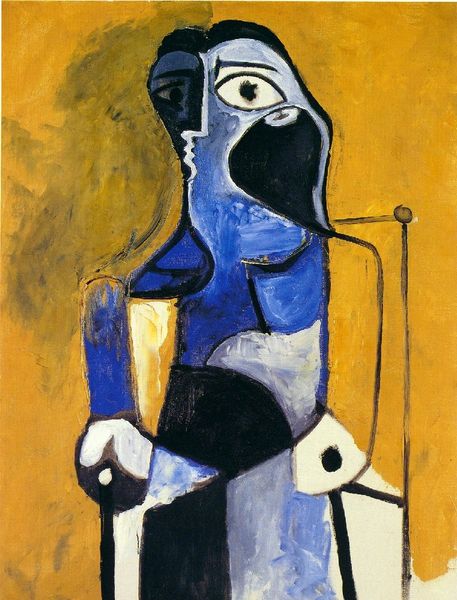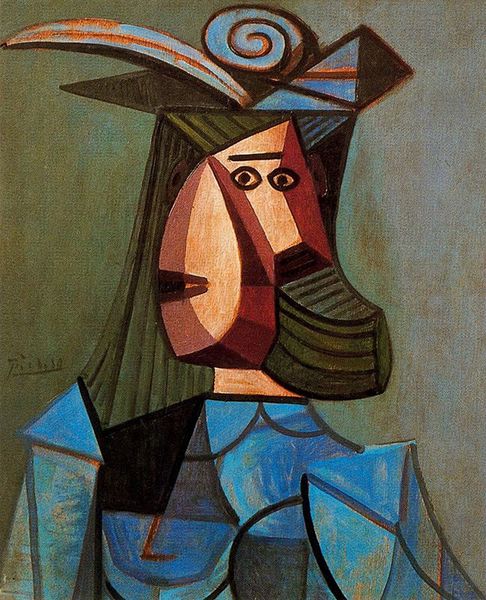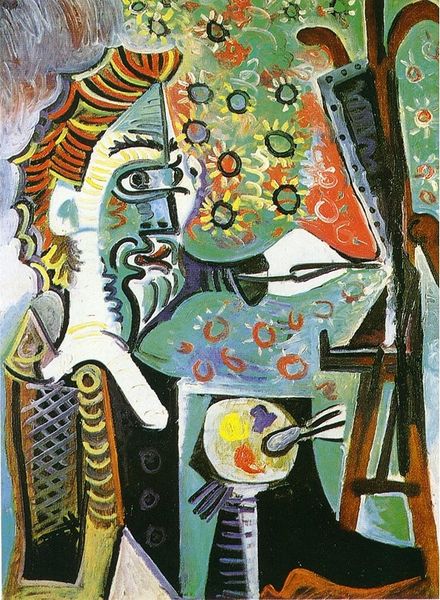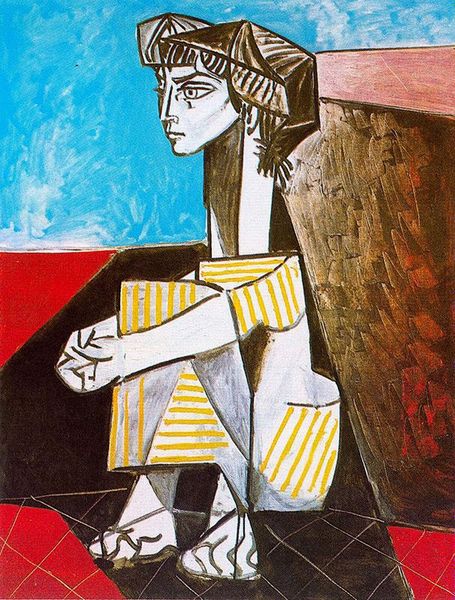
mixed-media, painting, oil-paint
#
portrait
#
cubism
#
mixed-media
#
painting
#
oil-paint
#
geometric
#
expressionism
#
abstraction
#
modernism
Copyright: Pablo Picasso,Fair Use
Editor: This is "Bust of a Woman and Self-Portrait" by Pablo Picasso, painted in 1929, with a mix of oil paint and other materials. It feels quite jarring, almost aggressively so, with the disjointed features and bold colors. What kind of statement do you think Picasso was trying to make here? Curator: I think that aggressive feeling is quite deliberate, reflecting the turbulent socio-political landscape of Europe at the time. Consider the rise of totalitarianism, the looming threat of war… This piece challenges the traditional portrait in ways that mirrored challenges to established power structures. Does the disfigured representation, seemingly broken in perspective, call into question whose vision matters most, especially within social and political systems? Editor: Absolutely. The way he fractured the image reflects that breaking down of perspective, this feels like there’s almost no clear message! Curator: Indeed. But the fractured representation isn’t entirely nihilistic. Picasso, through his use of geometric forms and contrasting colors, might also have been commenting on how identities themselves are fragmented and often performed depending on the societal roles individuals play. How does the work play into our understanding of Cubism and its reaction against the traditional expectations of art? Editor: That’s a great point; I see it as almost an act of defiance against established academic artistic norms. Curator: Precisely! It pushes the boundaries of what a portrait—and by extension, representation itself—could be in a rapidly changing world. It serves as a commentary, consciously or not, of a breakdown of older, traditional visual approaches, and maybe also, societal foundations. Editor: That helps me understand it better; I was so focused on the visual shock that I didn't consider the broader cultural implications. Curator: Exactly! Looking at it this way shows that beyond the aesthetics, art like this often engages in silent dialogues about the society we live in, its expectations, its repressions, its future, doesn't it? Editor: It really does. I will not be able to see Cubism the same way again!
Comments
No comments
Be the first to comment and join the conversation on the ultimate creative platform.
